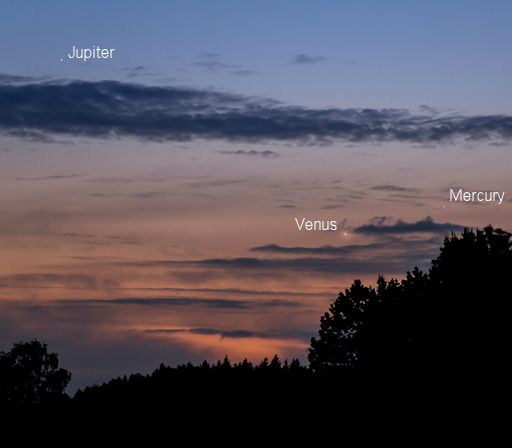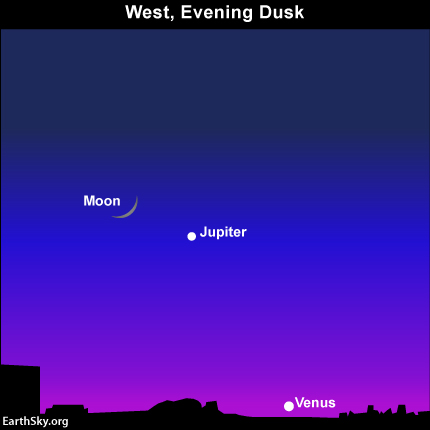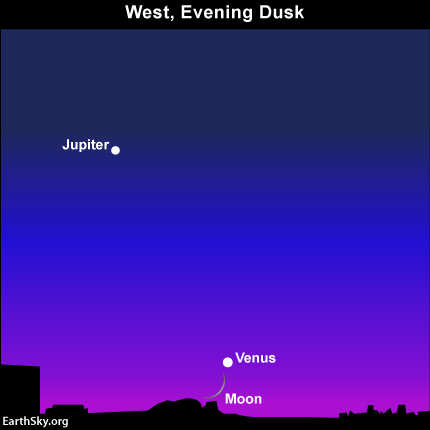TheWeatherChannel.com-3/16/13, Joe Rao

On Sunday evening, revelers can cap their St. Patrick’s Day by enjoying a view of a rendezvous involving two of the brightest objects in the night sky: the moon and the planet Jupiter.
About 45 minutes after sunset on Sunday (March 17), the eye-catching celestial duo will be visible in the southwest sky, roughly two-thirds up from the horizon to the point directly overhead (called the zenith).
For more information on this story please see TheWeatherChannel.com





